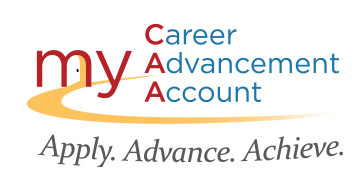Choosing a Program
Considering Massage School?
Explore which program is right for you.
Use our easy, 3-step guide to help you choose:
1. What type of massage–or massage setting–would you like to practice in?
2. What type of student are you?
3. What potential challenges & responsibilities would you be handling while attending massage school?
Want More Info First?
Call / Text: (262) 781-8102 or submit our short form:
#1. What type of massage–or massage setting–would you like to practice in?
- Relaxation / Pampering / Spa
- Great, most schools will have strong coverage of Swedish massage, which is the basis for relaxation massage. You may want to ask the school about training on other elements found in this type of setting such as hot towels, and focus on foot, hand & face massage.
- Therapeutic / Focus on Resolving Physical Issues / Clinic
- Not all schools provide a good grounding in this type of work. Find out how much coverage is provided for deep tissue & trigger point modalities.
- Ask if curriculum includes development of treatment plans & client recommendations around these. This type of treatment will require more expertise which is developed through practice. Find out how clinic supports work of this type.
- Specialized Treatments such as: Precision Neuromuscular, Lymphatic Drainage, Myofascial Release
- You may find more coverage of these modalities in longer programs, or where topic-specific educators are brought in to instruct. Ask about hours of coverage in your area of interest, or opportunities for special study during the program.
- Special Populations such as: Hospice, Elders, Babies
- Again, more coverage of these modalities are more likely in longer programs. Ask about coverage in the curriculum, and opportunities for hands-on in clinic and school events.
- Not Sure Yet?
- That’s okay! This is where most students begin.
- You can do some pre-study by talking to massage therapists about what they do, and experiencing different modalities in different settings. For these folks, a wide-ranging curriculum with broad coverage of modalities and populations is best.
#2. What type of student are you?
- Strong Aptitude for Science Topics
- Good! That aptitude will get a workout in the anatomy & physiology portions of the curriculum…you will need a good grasp of the muscles & tendons.
- This is particularly useful if you are heading toward therapeutic treatment. If this isn’t a strong suit for you, talk with the school & former students to learn how well each school supports students through this phase of education.
- Visual Learner
- A good portion of your study of massage therapy will happen in the classroom. Visual learners will want to look for plenty of demonstration of techniques & approaches to treatment.
- Hands-On Learner
- The sooner you have hands on bodies, the better! Find out when in the curriculum that begins. This can be a good starting base when comparing schools.
- Struggle in the Classroom / Taking Tests
- If this is you, you will want to look for what type of support is offered outside of class, and in preparation for tests occurring during school and the state tests for licensing.
#3. What potential challenges & responsibilities would you be handling while attending massage school?
- Transportation Issues
- Will you have the opportunity to tune into class from home? In light of the critical hands-on portions of the curriculum, it’ll be key to resolve transportation issues to the extent possible. Perhaps carpooling is available…talk to the school to learn about options.
- Health Issues
- Not only is attendance important for adequate preparation to practice, the state of Wisconsin requires the completion of a certain number of hours for licensing. But, sometimes health issues come up. Talk to the school about how this is handled, and a plan for making up time in the event of absence.
- Some schools are much better than others in accommodations made for students who miss class time.
- Family/Friend Support Responsibilities, or Busy/Unpredictable Schedule
- As above, it’s important to talk with each school in advance to learn about how they handle missed time and can accommodate students.
- Paying Tuition
- At all schools, tuition will need to be paid in full before documents reflecting completion of the program will be provided to the state for licensing.
- Talking with schools in advance will help reveal how well each school will be able to work with students who are balancing work & school, along with any financial aid/tuition assistance programs.
We hope this 3-step guide helps you compare massage schools, and evaluate which is best for you & your career. Have questions?
Call / Text: (262) 781-8102
Email: info@everyday-bliss.com
Your massage career starts here
GI Bill® Education Benefits Accepted
Are you ready to learn the healing power of massage? Take the first step toward living a life you love!
Learn more about the top-rated Massage Therapy School in Waukesha, WI.
Call, Text (262) 781-8102 or email info@everyday-bliss.com

The MyCAA Scholarship Program
The My Career Advancement Account (MyCAA) Scholarship is a workforce development program that provides up to $4,00 of financial assistance to eligible military spouses who are pursuing a license, certification, or Associate’s degree in a portable career field and occupation.

